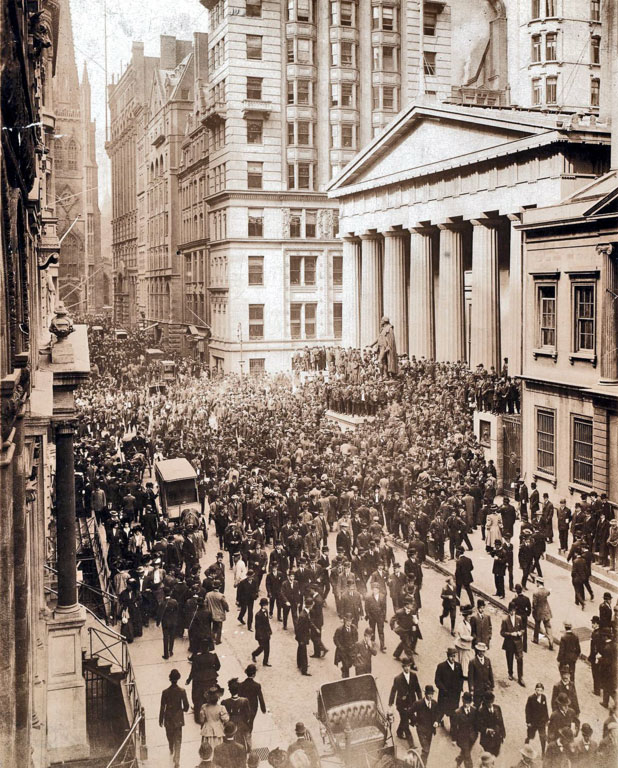
Colin B. Bailey, Director
Morgan and his staff were given the keys to the building in late 1906. By the start of 1907, Morgan spent the majority of his time in his new Library, having largely retired from Wall Street. But his days as a powerful banker were not over, and his Library would be the setting for one of the most important acts by a private individual during a time of national crisis. In the middle of October 1907, the stock market plummeted, and a financial panic strangled the nation—people were withdrawing their funds en masse, and banks were declaring bankruptcy. By Sunday, November 3, after two weeks of crisis, the unregulated trust companies were still struggling to stay in business. Morgan summoned the trust company presidents to his library and quietly locked the front doors. He was determined to resolve the crisis that evening. Since the United States had no central bank, Pierpont Morgan and his colleagues needed to raise millions of dollars in loans from solvent banks and wealthy industrialists to try to stabilize the economy. Just after four in the morning, Morgan announced they would all sign a pledge, with each committing a certain sum for the final-stage bailout. At the time, mounting concerns about one man’s inordinate power were eclipsed by an outpouring of acclaim. The panic led to the founding of the Federal Reserve System in 1913.
